History of the English Department
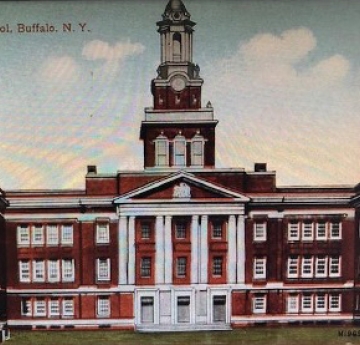
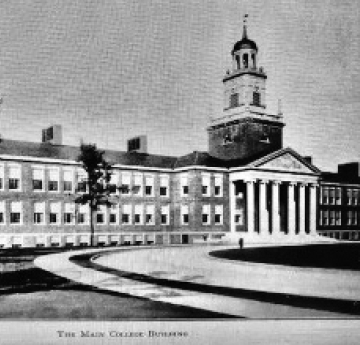
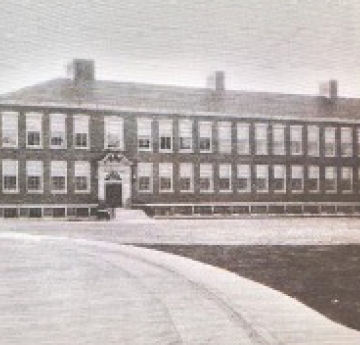
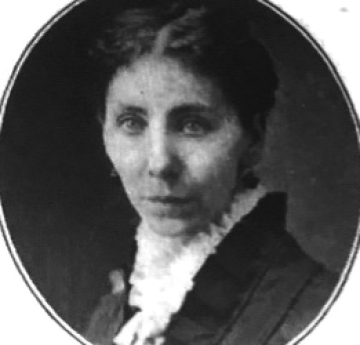
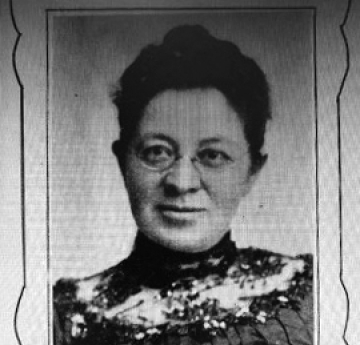
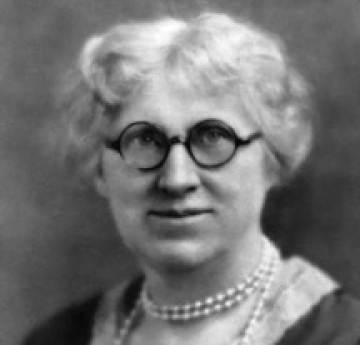
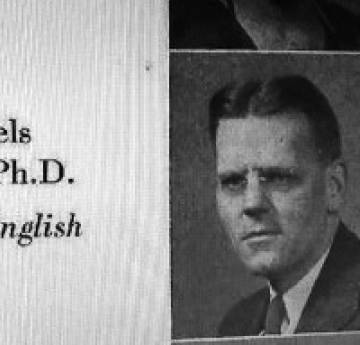
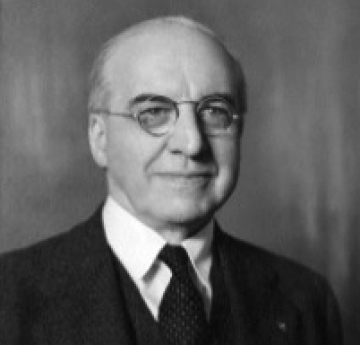
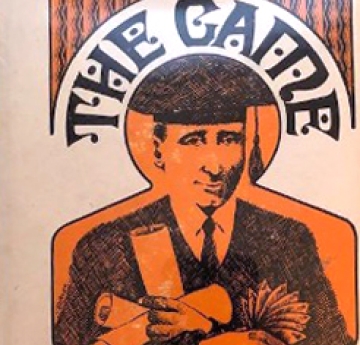
History of the English Department by Professor Emeritus Thomas Reigstad
Miss Mary J. Harmon was, arguably, the College’s first English department. She also comprised one-tenth of the College’s original faculty. Seventy-five students, 55 women and 20 men, streamed into the new French Renaissance style, three-story brick building fronting Jersey Street on Buffalo’s west side when its doors first opened on September 13, 1871. They searched for the right rooms for classes taught by the instructor of ancient language, of mathematics, of chemistry, of natural science, of singing, and of drawing and penmanship. On that opening day, students also sought out Miss Harmon’s class in education and rhetoric. The initial College edifice was designed by well-known local architect John Selkirk, whose son Colonel George Selkirk co-owned the Buffalo Express with Mark Twain when Twain lived in Buffalo from 1869-1871.
Miss Harmon taught elocution, rhetoric, and composition at the Normal School of Buffalo for the next 15 years. In doing so, she set the tone for 150 years of contributions by English department faculty toward nurturing the reading, writing, and thinking skills of Buffalo State students, both those specializing in the study of literature, writing, and English teaching, and those campus-wide needing fundamental literacy skills. The English department has been there from the beginning, through long periods of stability and in times of exponential growth as Buffalo State has evolved. The department has played a role in each of the three campuses over its history, and has an enduring connection to two of the original five Georgian style red brick buildings that made up the Elmwood Avenue footprint when it opened ninety years ago.
Miss Harmon was known for possessing “a sort of joyfulness,” and “when she began her course on phonics, the teaching of other vowel sounds than our own was a revelation” to her students. Her English teaching career at the College encompassed two principals (or presidents): Henry B. Buckham and Dr. James M. Cassety. At the time that Harmon stepped down in 1886, the English faculty had routinely numbered only two people. They were able to handle the limited combinations of short courses in English (grammar and analysis, spelling and composition, rhetoric and composition, and general literature) required of the teachers-in-training who were fulfilling one of three areas of study: Normal, Collegiate and Scientific.
One renowned member of the early era two-person English faculty corps was Dr. Susan Frances Chase, who started at the College in 1899. Like several of her cohorts over the years, Dr. Chase did double duty, splitting her time between English and psychology. She was known to emphasize “above all that the study of good literature should bring pleasure to the reader.” After teaching English and psychology courses for many years, Dr. Chase eventually devoted instruction to psychology only. In 1926, her last year at the College, The Elms yearbook was co-dedicated to her. And in 1962 South Hall, a dormitory originally built in 1950 on the Elmwood campus, was re-named Chase Hall, and formally dedicated to “the memory of a former devoted teacher of psychology and literature, Susan Frances Chase.” Today, Chase Hall houses University Police, the Business department and the Teacher Certification office.
Dual teaching assignments such as Susan Frances Chase’s persisted through the late 1930s as members of the small English staff performed dual roles such as “Instructor of Methods in Composition and History,” “Instructor of English and Penmanship,” “Instructor of English and School Economy,” and—believe it or don’t—“Instructor of Reading and Calisthenics” (at times also referred to as “Physical Culture” or “Physical Training”). Quite the pedagogical coupling of body and mind!
When Daniel Sherman Upton became the third College principal in 1909, he brought with him a degree in mechanical engineering and a passion for education in the trades. His older sister was named Harriet Beecher Stowe Upton, born just eight years after Stowe’s best-selling Uncle Tom’s Cabin was released in 1852. Within two years of Upton’s appointment, the College created two new departments: the home- making vocational and industrial arts vocational. Each of these new programs required several hours of study in literature/rhetoric, and composition/grammar. The curricular demands and slight enrollment uptick resulted in the English faculty increasing to three by 1917. Under Upton, the College razed its original home in 1914 and opened on the same site a larger Georgian Revival style building modeled after Independence Hall. That structure later became Grover Cleveland High School, and today houses the International Preparatory School.
After Principal Upton’s untimely death in 1918, Dr. Harry Westcott Rockwell took over as the College’s fourth leader. So began a thirty two- year era during which the College and the English department flourished. Dr. Rockwell’s mission was to make the College into the premier teacher-training institution in New York State. He immediately embarked on a major reorganization.
As part of Dr. Rockwell’s make-over, the first formal English department was established for the 1919-1920 academic year. Miss Ida Louise Kempke was named first department head. Miss Kempke specialized in methods of grammar and composition, and literature. Her new department swelled to five faculty members. That year, the English curriculum, so limited over the previous forty-eight years, was totally revamped as well, to include a range of ten courses. The College catalogue of that year provided, for the first time, detailed descriptions of each course and even listed the required textbooks. Most of the courses were still methods courses for the training of elementary school and vocational teachers. Among the new additions were: Literature for Children; Literature for Advanced Grades (one of the required texts being Newcomer-Andrews’s 1910 Twelve Centuries of English Poetry and Prose); Household English (instruction in writing letters, business forms, and public speaking for the Home Economics vocational majors); and Special English (a unique remedial course for students “deemed deficient” in written and speaking skills)
In Miss Kempke, Dr. Rockwell appointed a dedicated person to head the fledgling English department. She was a Buffalo Normal School alum (classical course, 1885), had earned a professional degree at the University of Buffalo and taken “extra sessions” at Columbia Teachers College, Cornell and Harvard, and had been teaching English at the college since 1907. Miss Kempke led the English department for seven years and retired in 1936 after nearly thirty years at the College.
In 1927 two male teachers joined the English department. Until that time—for the entire first 46 years of the College’s existence—the teaching of English had been in the hands of twenty-four different women. Also, in 1927 for the first time traditional academic titles were bestowed upon faculty. Miss Kempke was listed as Professor of English, Eileen Mulholland was Assistant Professor of English, Mina Goossen was Instructor of English and Dramatics, John P. Bethel was Instructor of English, and Earl Daniels was Professor of English. Both of the males to break through the glass ceiling in English at the College possessed PhDs from Harvard. Dr. Daniels took over immediately as English department head and taught contemporary poetry. Once again, the English department nearly doubled the number of its course offerings.
In 1928 the College was renamed State Teachers College at Buffalo, and Dr. Rockwell was designated “president.” As Dr. Rockwell led the College’s late 1920s boom, the “new” west-side facility was proving inadequate. So, in 1929 a cornerstone was laid for the Main Administration building (today’s Rockwell Hall), one of five structures planned for an expansive campus northward on Elmwood Avenue. At the ceremony on October 9, 1929, the cornerstone’s sealed container included a poem written by Dr. Daniels:
"Lines for a Cornerstone"
Sealed against Time, today we set away
The Past within the corner’s rugged stone,
Whereon our dream, which through slow months has grown,
Shall take its splendid shape in steel and clay.
Set firm that stone in place. Oh on it may
The building strongly rest. Set firm that stone—
Symbolic corner-rock of Wisdom’s throne—
Preserving, for Tomorrow, Yesterday.
On this, the only true foundation laid,
In noble pride the building shall arise,
Eternal sign of highborn enterprise,
With doors wide-flung. And Wisdom, sober aid,
Shall lodging find, where with a single eye
Both Past and Present watch the eastern sky.
Dr. Daniels made a rather swift exit from campus, departing after only two years to eventually become a legendary teacher at Colgate University. However, his poem still presumably rests in the 1929 cornerstone of Rockwell Hall. Dr. Daniels’s dedicatory poem is not the only strong link between the English department and the Main Administration building on the Elmwood Avenue campus’s original quadrangle.
When the current campus first opened in 1931, the chimes were installed in the Main Administration building’s (Rockwell Hall’s) bell tower. One of the four bells, the large one striking the G note, was brought from the former College building. The E note bell was a gift of the 1930 graduating class. The D note bell was donated anonymously in honor of the College’s first three principals (presidents). But the C note bell was given by The Elms yearbook staff as a tribute to the English department’s Miss Kempke, who for years had been a faculty advisor of The Elms and The Record. The bell is inscribed to Miss Kempke thusly:
The Elms, 1912-1930
“In you have we welded
Our hopes, Chime softly, Bell;
Our traditions,
Chime clearly, Bell; Our very best,
Chime ever, Bell.”
Three years later, the 1934 The Elms was dedicated to Miss Kempke, “who has watched The Elms grow from a small seed to a sturdy tree, with ever-present interest and ever-ready assistance … In grateful appreciation of her years of faithful service, this yearbook is respectfully dedicated.”
An additional lasting testament to the English department’s connection to the Main Administration building occurred in 1961. A little over a month after Dr. Rockwell passed away, a special memorial convocation was held on the afternoon of February 19th in the Main Administration building auditorium to honor his memory. The principal address was delivered by Dr. Arthur L. Bradford, an English department professor. Buffalo State President Paul Bulger announced at the memorial that the Main Administration building was to be re-named Rockwell Hall. As part of the re- naming dedication, Dr. Fraser Drew, an English professor whom Dr. Rockwell had hired in 1945, chose the wording for a plaque that for decades hung on the wall under Dr. Rockwell’s picture at the front entrance of Rockwell Hall. According to Dr. Drew: “My special task … was to prepare the text for the bronze plaque that hangs on the wall under his [Rockwell’s] picture. It is a quote from the Roman poet, Horace.”
President Rockwell was known as something of a specialist in 20th-century literature. The English department faculty must have been pleased to have such a champion of literary arts leading their college. Rockwell was an officer in the Buffalo community’s Literary Clinic, a group that read papers on authors and books. He was frequently quoted in local newspapers about his favorite books and writers.
Rockwell also wrote short fiction and poetry, and interviewed well-known authors. In the summer of 1925, he spent an afternoon with Sinclair Lewis at Lewis’s downstate summer retreat and was given a personal tour by Lewis of his “writing shack” behind the barn. Before Rockwell left for home, Lewis signed a copy of Arrowsmith (maintained by the Archives and Special Collection) with this inscription:
“To Dr. Harry W. Rockwell with the salutations of Sinclair Lewis Loudon Farm Katonah, N. Y. Aug. 8, 1925.”
Dr. Rockwell set the gold standard for his longstanding presidency of 32 years. However, the English department leadership also demonstrated stability and longevity. For the first 38 years that there was a department head, not counting Dr.
Daniels’s short two-year stint, only three faculty members served as department head. It wasn’t until 1957-1958 that the position was changed to “chairman.”
When Dr. Rockwell began his tenure at the College, enrollment was 275 students. When he retired as president in 1951, the student body numbered over 2,000. The English department’s status reflected the College’s growth over the 1930s and into the early 1950s. For most of the 1930s the department was comprised of six full-time faculty.
In the mid 1930s the department flirted briefly with a new streamlined curriculum of five fundamental courses: English composition, literature, dramatic arts (how to produce plays), poetry (Chaucer to the present), and the study of drama. However, by the post World War II era, English course offerings had once again ballooned to 24, with distinct courses on The Essay, The Short Story, The Novel, two on Shakespeare, and on individual centuries of British and American literature.
Furthermore, three developments during Dr. Rockwell’s final six years prompted an unprecedented transformation of the English department: funding for the construction of three new buildings and major renovation of two existing buildings; the approval of the master of science degree in education; and the College’s affiliation with SUNY. This boom caused the department to offer graduate courses for the first time in 1947-1948: Linguistics; Studies in American Literature; and American Regional Literature. To keep up with new curricular demands, the English department expanded significantly to 14 members by the early 1950s. In 1954, a bachelor’s degree in Early Secondary English (grades N through 9) was approved, and by the end of the decade the department boasted a full-time staff of twenty.
In 1961 Buffalo State became a college of arts and sciences, with a new mission to prepare students for other jobs besides just teaching.
The stage was set for the chaotic, yet golden, age of the 1960s. In 1961 student enrollment was 4,443. By 1975 it reached 12,604 students.
In rapid succession, between 1962 and 1967 a bachelor’s degree in Secondary English grades 10-12, an M.S. in Secondary English, a bachelor’s degree in English, and an M.A. in English were established. Correspondingly, a hiring spree exploded. By the early 1960s the size of the English department faculty nearly doubled to thirty-five. Then, almost annually for the rest of the 1960s, six or seven new teachers joined the department. A handful of department faculty, with specialties in theater, journalism, speech, and folklore, left to join new departments in those areas across campus. But by the close of the 1960s, the English department was forty-five members strong, a number only barely eclipsed by the forty-six-member department peak of 1972-1973.
And after decades of being scattered across campus, mostly crammed into small office spaces in the basement and first floor of Rockwell Hall, the English department finally found a home. In 1964-1965 when Home Economics finally had vacated its longtime Vocational Building quarters for the newly-built Caudell Hall, the English department moved into the building, one of the five original Georgian style red brick buildings on the Elmwood Avenue campus, renamed in October of 1962 in tribute to Jesse Ketchum, a 19th century Buffalo philanthropist who had deeded 5.5 acres of his west side hay field to the city of Buffalo on which to build the Normal School of Buffalo. The English department has been in Ketchum Hall ever since.
It’s probably safe to say that the English department is the only department on campus to have a novel published with itself as central to the plot. The Game, a satirical roman a clef of dubious artistic merit was released in 1967 by a professor of English. The novel focuses in large part on the fictional Central State Teachers College and the intrigues within its imaginary English department. However, the fictional campus and department represent a thinly disguised Buffalo State English department. Department faculty with knowledge of that era have been able to identify as many as nine fictional characters in The Game with some confidence as being modeled after actual English faculty members of the mid 1950s-early 1960s.
As the 1970s wore on, the department’s size held steady at around 35, a number that stayed consistent into the 1980s.
When Dr. J. Bruce Johnstone was appointed president in 1979, his basic skills initiative added a new dimension to the department. Dr. Johnstone wanted to ensure that College graduates possessed sufficient reading and writing skills. He favored some kind of exit test. By 1980, the department created a formal freshman composition program consisting of a placement essay exam, four tiers of courses and two exit essay exams based on a selection of readings for each course. For several years the freshman composition courses were taught by all full-time faculty and a large number of adjunct faculty. By the mid 1980s the freshman composition program acquired a reputation as the flagship freshman writing program throughout SUNY. To give an example of its scope, in the late 1980s, a typical semester offered eighty sections of freshman composition taken by about 1,800 students and taught by fifty or so faculty members. From 1994 to 2000, portfolio assessment was instituted as an alternative to the exit essay exam system in the freshman composition program. The portfolio assessment option typically attracted thirty teachers and 600 students each semester.
The Freshman Composition Program was renamed the College Writing Program (CWP), removed from the English department’s jurisdiction, and taught almost exclusively by adjunct faculty for several years. However, in the last couple of years, the CWP returned to the English department and Ketchum Hall. The program teaches only two freshman writing courses and is still taught mostly by adjunct faculty. In a recent semester, 1,958 students were enrolled in the two CWP courses.
From the 1970’s through the early 2000’s, the department brought 130 or so poets and writers to the college for readings. These esteemed and well-attended literary events were open to the community and featured nine Irish poets and writers (including Nobel Laureate Seamus Heaney), twelve Canadian poets, three English poets, six Native American poets (including U.S. Poet Laureate Joy Harjo), six Australian poets, over eighty American poets and writers (including Pulitzer Prize winner Carl Dennis; another U.S. Poet Laureate and Pulitzer winner, Charles Wright; New York State Poet Laureate and Bollingen Prize winner Robert Creeley; Pulitzer Prize winner William Kennedy; and Kentucky Writers Hall of Fame member Wendell Berry), and six African-American poets and writers (including National Book Award/Pulitzer Prize nominee Ishmael Reed and Pulitzer Prize winner/U.S. Poet Laureate Gwendolyn Brooks), and at least twenty poets and writers from the English department. At the recommendation of the English department, the College bestowed Honorary Doctor of Letters degrees upon two of the visiting poets, John Montague of Ireland and Canada’s Barry Callaghan.
From the mid 1960s through the early 2000s, many distinguished students majored in English or Secondary English. Among the department’s most notable alumni are:
- Nancie Atwell (B.S., Secondary English): First recipient of the Varkey Foundation’s Global Teacher Prize, and founder of the Center for Teaching and Learning, a K-8 demonstration school in Maine. Her influential book In the Middle has been called “the greatest book on literacy teaching ever written in this country.” Received honorary doctoral degrees from Middlebury College and the University of New Hampshire.
- Kyle Bradstreet (B.A., M.A., English): Producer and writer. Recipient of Golden Globe and Peabody awards for writing. Recipient of Buffalo State Young Alumnus Achievement Award.
- Gene A. Cretz (M.S. Secondary English): Former U.S. Ambassador to Ghana and Libya.
- Diane English (B.A., English): Director, screenwriter and producer. Recipient of Buffalo State’s Distinguished Alumnus Award and of a SUNY Honorary Doctorate of Letters.
- Eric Gansworth (B.A., M.A., English): raised at the Tuscarora Nation, an enrolled Onondaga writer and visual artist. He is a professor and Lowrey Writer-in- Residence at Canisius College. Author of a dozen books. Among his writing honors are: Pen Oakland Award, American Book Award (NAISA Book of the Year), Whippoorwill Award, and Longlist 2020 National Book Award in Young People’s Literature category.
- Evelyn S. Lieberman (B.S. Secondary English): First woman to serve as White House Deputy Chief of Staff; the first U.S. Under Secretary of State for Public Diplomacy and Public Affairs. Recipient of Buffalo State Distinguished Alumnus Award and of a SUNY Honorary Doctorate of Humane Letters.
- Deborah Oppenheimer (B.S., Secondary English): Producer. Academy Award winner for best documentary feature. Recipient of Buffalo State Distinguished Alumnus Award and of a SUNY Honorary Doctorate of Fine Arts.
English department alumni and faculty have also contributed to the College’s legacy by donating a treasure trove of materials to Archives and Special Collections. Among the gifts are:
- The Ida Kempke and Charles Root Textbook Collection (1750-1960)
- The Dr. Fraser Drew-Langston Hughes Correspondence (1950-1967)
- The Diane English Script Collection (1988-1995)
- The Manny Fried Collection (1950-1980)
- The Dr. David Lampe Poetry Speakers Collection (1979-2002)
Also available in Archives and Special Collections are oral histories by Dr. Drew, Dr. Walter B. and Rhoda Greenwood, and Mrs. Pauline Gragg (widow of English professor Wilson Gragg).
Today the English department remains headquartered in Ketchum Hall. As tenured faculty have left, they were most often replaced by adjunct faculty. That hiring practice coupled with declining enrollment has resulted in the current full-time department faculty dwindling to seventeen, with an adjunct teaching force of twenty. Yet, the department does more with less. As of 2020, there are 114 students enrolled in English, 105 in Secondary English, and 43 in Writing. The new bachelor’s degree in Writing was approved in 2007 and began in 2008.
Currently, the department sponsors a rich array of specialized studies in addition to bachelor’s degrees in English, Secondary English, and Writing, and master’s degrees in English and Secondary English. Four minors are available: in Writing, Literary Studies, Film Studies, and English Education. The department also houses a post- baccalaureate program for students seeking New York State certification to teach English Language Arts. And, a new certificate program in technical writing has just been rolled out.
Today’s English department continues to sponsor the literary magazine Elm Leaves Journal and hosts the Drop Hammer Reading Series, named for Emanuel “Manny” Fried, Buffalo State English professor who taught creative writing from 1972 to 2008. The hallways and classrooms of Ketchum Hall also bustle with the Film Studies Minor screening and discussion series, and attractive third floor meeting spaces such as the Seminar Room in 318, the endowed Ilene K. Fleischmann Writing Program Suite, and the Student Lounge. The Secondary English office, which coordinates the Western New York Network of English Teachers, is on the third floor; the English and CWP offices are located on the second floor. The English department also operates the Writing Help Center in Butler Library.
So, from Mary J. Harmon’s elocution and rhetoric courses in 1871 to a 21st century faculty offering robust, vibrant courses—many of them on-line--and activities in writing, literature, film study, and English teaching, Buffalo State’s English department has been there at every step of the College’s 150 years, and will undoubtedly play a pivotal role in enriching the College’s future.

